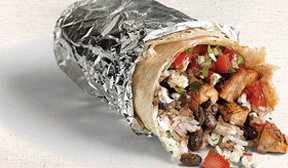 ts for beef, cheese and avocados underpins Chipotle Mexican Grill’s plans for a menu price hike later this year.
ts for beef, cheese and avocados underpins Chipotle Mexican Grill’s plans for a menu price hike later this year.“It has been nearly three years since our last company-wide price increase, and while we want to remain accessible to our customers, we are at a point where we need to pass along these rapidly rising food costs,” said Jack Hartung, chief financial officer, during an April 17 call with financial analysts to discuss first-quarter earnings. “We are currently reviewing our menu prices on a market-by-market basis compared to competitors, and based on our analysis so far we plan to increase prices on average somewhere in the mid-single digits. We expect we will start installing new menu boards with higher prices later this quarter and finish installation by early in the third quarter.”
With steak prices up 25% from the previous quarter and cheese expected to top 10% this year, combined with a 30% drop in production of California avocados compared with last year, Chipotle estimated its food costs at nearly 36% of revenue in April and growing in the coming quarters.
“And while we haven’t felt the effects of the recent hog virus on the supply of pork, supply challenges and pricing pressure may happen later this year,” Mr. Hartung added.
The burrito chain’s efforts to remove bioengineered ingredients from its menu items figures into the higher food costs, too. The company previously said it pays more for oil since transitioning from soy to non-bioengineered sunflower and rice bran oils last year.
“To date we have eliminated virtually all of the G.M.O. ingredients in our food,” said Steve Ells, chairman and co-chief executive officer, during the call. “Our corn and flour tortillas are the only foods we currently serve that are made using ingredients that contain or could contain trace amounts of G.M.O.s, and now we are testing new non-G.M.O. recipes for these tortillas and we hope to be able to roll them out by the end of the year.”
Chipotle believes its reputation of sourcing sustainable, quality ingredients will help justify the menu price increases.
“What we think more about is making sure that we earn pricing power, and if we focus on that, if we focus on creating a wonderful restaurant experience and cooking and serving delicious food that we’ll have the permission to raise prices, and we know if we do a good job with that then picking the timing of it is less relevant — it is just not that important,” Mr. Hartung said. “And generally we’ve been patient in terms of raising prices. We have had this luxury of being patient.”
Indeed, the fast-casual company delivered another strong quarter, even during a harsh winter that challenged its competitors. Comparable restaurant sales climbed 13% on increased customer visits and a higher average check from an increase in side orders and catering.
Net income for the quarter ended March 31 was $83,069,000, equal to $2.67 on the common stock, up 8.5% from $76,584,000, or $2.47, in the prior-year period.
Revenue increased 24% to $904,163,000, which compared with $726,751,000 during the same quarter a year before.
Looking ahead, the company expects to open 180 to 195 new restaurants during the year and achieve high-single digit growth in comparable restaurants sales, excluding the planned menu price increase.





